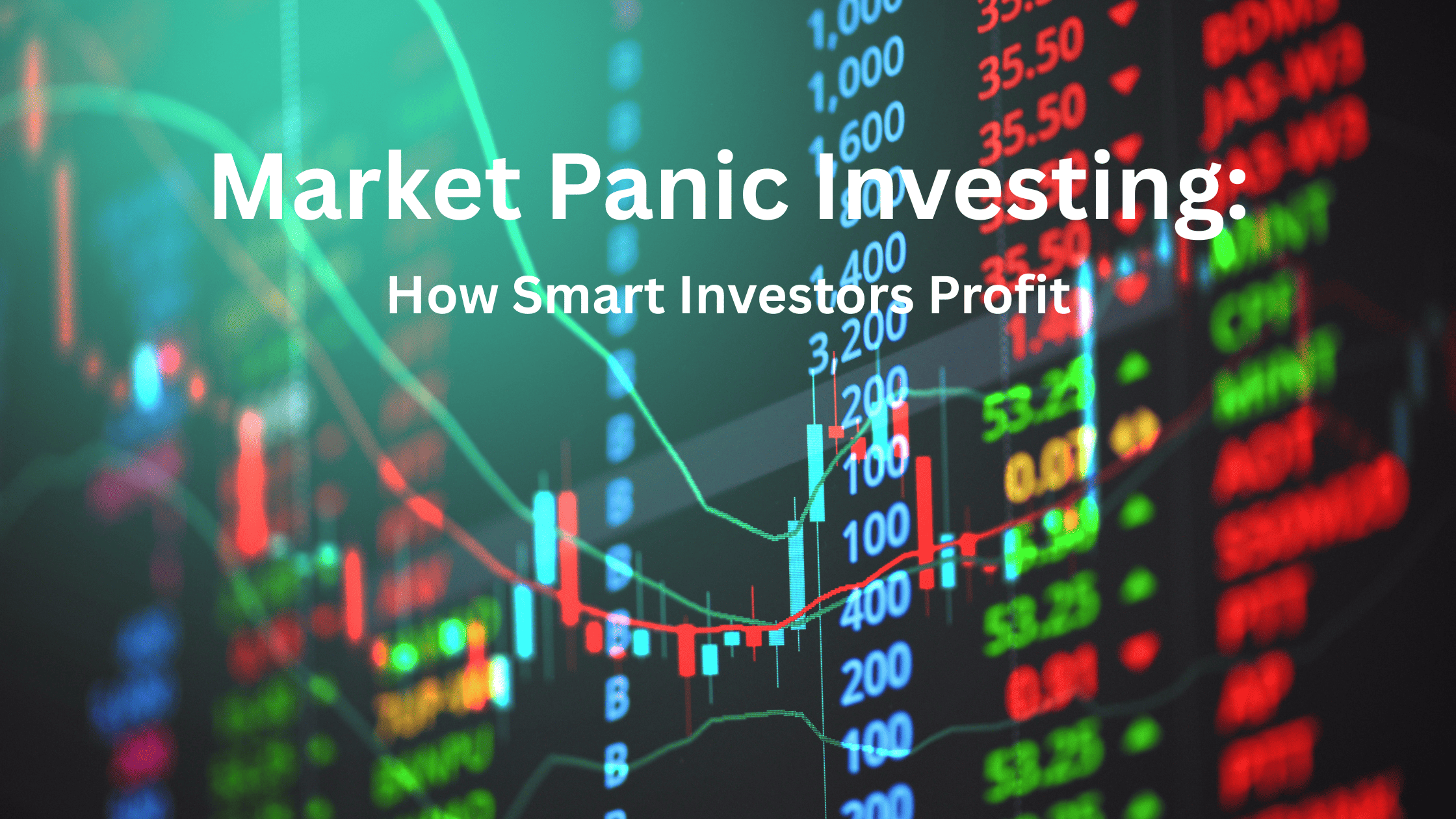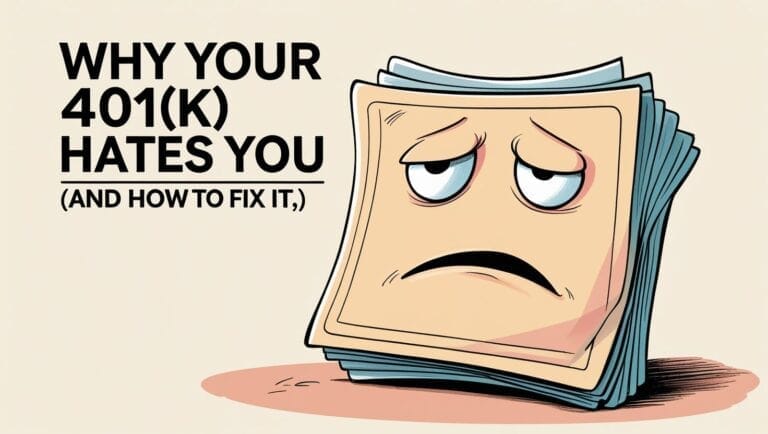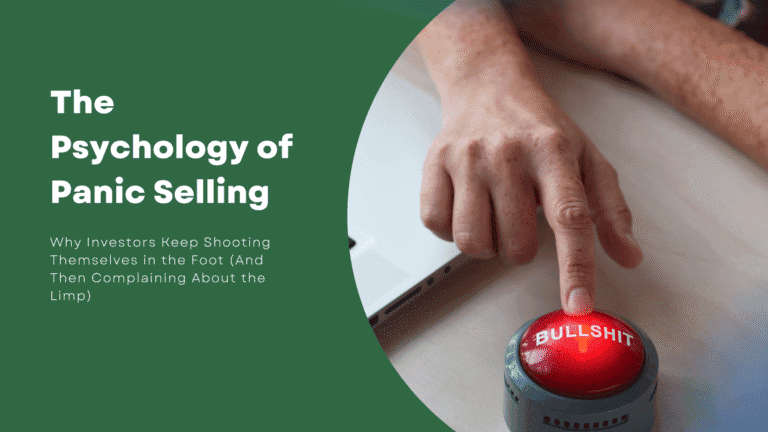Market Panic Investing: How Smart Investors Profit When Everyone Else Panics (2025 Edition)
Market Panic InvestiMarket Panic Investing: How Smart Investors Profit When Everyone Else Panics (2025 Edition)
A World Built on Panic — and Profits
Every stock market crash feels like the final chapter of capitalism—until someone quietly buys the dip and builds generational wealth. Welcome to the recurring theater of financial absurdity, where panic is the price of admission and profits go to the calmest people in the room. In 2025, chaos isn’t just a possibility—it’s a feature, not a bug.
Between artificial intelligence bubbles threatening to burst, Federal Reserve officials preaching their “soft landing” gospel, geopolitical tensions escalating across multiple continents, and deficit dramas that would make even the most seasoned economists uncomfortable, smart investors understand a fundamental truth: market panic investing isn’t about avoiding fear—it’s about weaponizing it. Stock markets can experience rapid declines due to panic selling and external shocks, leading to widespread financial instability.
The most successful investors in history didn’t make their fortunes during bull markets. They made them during crashes, corrections, and complete meltdowns when everyone else was running for the exits. A market correction is a significant decline in the stock market, typically defined as a drop of 10% or more from recent highs, but it is less severe than a crash and often serves as a natural reset for overvalued markets.
Market panic investing is the art of seeing opportunity where others see apocalypse, and it’s a skill that separates the wealthy from the merely comfortable. By understanding how to navigate market volatility and downturns, investors can position their portfolios to capitalize on lower prices and attractive prices that emerge during financial crises. Understanding and managing market losses is crucial for developing emotional discipline and making rational decisions during turbulent times. Historically, markets often rebound to record highs after periods of panic and decline, rewarding those who remain patient and strategic.
The Neuroscience Behind Market Volatility and Panic Investing
When markets crash, your brain doesn’t distinguish between a portfolio decline and a physical threat. The amygdala—your brain’s ancient alarm system—lights up like a Christmas tree, flooding your body with cortisol and adrenaline. Those red candles on your screen trigger the same fight-or-flight response that kept your ancestors alive on the savanna. Market losses can provoke intense emotional reactions, often leading to poor investment decisions. This physiological reaction explains why panic selling becomes so common during market downturns, even though it’s often the worst decision for long term investors.
This is where market panic investing becomes a psychological game before it’s a financial one. Research in behavioral finance shows that humans are hardwired to feel the pain of losses approximately 2.5 times more intensely than the pleasure of equivalent gains. This asymmetry explains why even seasoned investors make catastrophic decisions during downturns, abandoning their investment strategy and selling at the worst possible times.
The difference between panic and profit isn’t access to better data—it’s mastering emotional discipline. Successful practitioners of market panic investing train their minds to interpret fear as a buy signal rather than a threat. They’ve rewired their neural pathways through experience, preparation, and a deep understanding of market history. A witty rule of thumb is that when Google Trends shows searches for “should I sell everything” spiking vertically, that’s often when smart investors start filling their shopping carts.

Assessing Your Market Panic Investing Risk Tolerance
When the stock market is in freefall and headlines scream about the next financial crisis, your risk tolerance becomes your most valuable asset—or your biggest liability. Understanding how much market volatility you can stomach is the foundation of any successful market panic investing strategy. It’s what keeps you from panic selling at the bottom or making rash decisions that derail your long-term financial goals.
Risk tolerance isn’t just a buzzword tossed around by financial advisors; it’s a deeply personal measure of how you react to a significant drop in your investment portfolio. Many investors tend to overestimate their ability to stay calm during a market downturn, only to discover their true comfort level when stock prices actually plummet. That’s why assessing your risk tolerance before the next market crash is essential for building a resilient investment strategy.
1. Study Behavior, Not Headlines
The financial media has a vested interest in your emotional state. Fear sells newspapers, drives clicks, and boosts advertising revenue. By the time CNBC anchors are declaring a “complete market meltdown” with apocalyptic graphics, the worst is usually already priced into assets. Market panic investing requires you to see through the noise and focus on quantifiable fear indicators rather than sensational headlines.
Here’s what sophisticated practitioners of market panic investing actually monitor:
- The VIX (Fear Gauge): When the CBOE Volatility Index climbs above 30, fear is running high. Above 40? You’re witnessing pure, unadulterated panic—and potentially a generational buying opportunity. The VIX peaked above 80 during the 2020 COVID crash and above 60 during the 2008 financial crisis. Both times marked exceptional entry points for market panic investing.
- Put/Call Ratio: This metric reveals whether traders are betting on market declines (puts) or advances (calls). When the ratio exceeds 1.5, it signals extreme pessimism and possible capitulation. Options market data provides a window into professional sentiment that headline readers miss entirely. Professional investors often use options strategies to hedge or speculate during periods of panic, which can further influence this ratio.
- AAII Sentiment Survey: The American Association of Individual Investors publishes weekly sentiment data. When bearish sentiment exceeds 50% while bullish sentiment falls below 25%, you’re witnessing the exact conditions that make market panic investing profitable. These extremes historically precede rebounds.
- Social Media Sentiment Analysis: In 2025, platforms like Twitter/X, Reddit, and financial forums provide real-time emotional readings. When terms like “apocalypse,” “depression,” and “end times” trend alongside market tickers, contrarian investors practicing market panic investing quietly load up on quality assets.
Releases of economic data can also trigger spikes in fear indicators and significantly influence overall market sentiment.
Warren Buffett articulated the market panic investing philosophy perfectly: “Be fearful when others are greedy, and greedy when others are fearful.” This isn’t just folksy wisdom—it’s a quantifiable strategy backed by decades of market data that helps individual investors mitigate risk and take advantage of market swings.
2. Build Your War Chest During Calm

The fatal flaw in most investors’ approach to market panic investing is simple: they have no ammunition when opportunity arrives. Panic profits are funded during peaceful times, not during chaos. Maintaining 20–30% of your total investment portfolio in liquid, safe assets is essential. This isn’t “dead money”—it’s strategic dry powder ready to deploy when a significant drop occurs. The appropriate amount of cash to hold will depend on your personal financial situation, including your income stability, expenses, and investment goals.
Consider these options for your war chest:
- High-Yield Savings Accounts: Currently offering 4–5% APY through banks like Marcus, Ally, or Capital One. Financial institutions play a key role in providing these safe, liquid options for storing your cash reserves.
- Money Market Funds: Competitive yields with same-day liquidity.
- Short-Term Treasury Bills: Government-backed with predictable returns.
- Ultra-Short Bond ETFs: Slightly higher yield with minimal interest rate risk.
This cash position serves dual purposes in market panic investing. First, it provides emotional armor when markets are melting down—you’re not forced to sell depressed assets to meet liquidity needs. Second, it gives you the courage to act when others are paralyzed by fear.
A pro tip for market panic investing is to deploy capital in stages. Commit 25% of your dry powder when markets are down 15%, another 25% at –20%, another 25% at –25%, and reserve the final 25% for true capitulation. This staged approach prevents the common mistake of buying too early in a prolonged decline and helps manage risk tolerance effectively.
3. Buy Value, Not Volume During Market Panic Investing
When stock prices detach from underlying business fundamentals, market panic investing becomes a hunting expedition for quality. Not everything that’s down is worth buying. It’s crucial to identify the right stocks—those with strong fundamentals and resilient business models—to maximize potential gains and avoid value traps. The key is distinguishing between companies facing temporary sentiment problems versus those with permanent structural issues.
Focus on businesses with these characteristics:
- Profitability: Positive earnings, not just revenue growth stories.
- Strong Balance Sheets: Low debt-to-equity ratios (generally below 0.5 for non-financials).
- Persistent Dividends: Companies that maintained or grew dividends through previous crises.
- Insider Confidence: CEOs and directors buying their own stock signals genuine conviction.
- Essential Products/Services: Companies people can’t stop using regardless of economic conditions.
Consider the 2020 COVID crash as a market panic investing case study. Utility companies and energy majors dropped 40–50% despite providing essential services with stable cash flows. In contrast, technology stocks can sometimes be overvalued during speculative bubbles, so careful analysis is essential to avoid overpaying for growth. Investors who recognized the disconnect between panic-driven prices and business fundamentals earned 70–100% returns within 12–18 months.
Your Market Panic Investing Checklist:
Before deploying capital, verify:
- P/E ratio below the company’s 10-year historical average.
- Debt-to-equity under industry norms.
- Free cash flow covering dividends with room to spare.
- Insider buying activity in recent months.
- Analyst estimates still positive for long-term growth.
- Diversification across more than one asset class to reduce risk.
- Each purchase aligns with your overall investment objectives.
Remember: Market panic investing isn’t about buying everything that’s cheap—it’s about buying excellent companies when they’re unfairly punished by indiscriminate selling. This approach helps mitigate risk and aligns with long term financial goals.
4. Embrace the Boredom of Disciplined Market Panic Investing
The investing industry thrives on excitement, but market panic investing rewards boredom. While the herd doom-scrolls through financial Twitter and refreshes their portfolio app 47 times per day, disciplined investors let time and compounding work their magic. Volatile markets can tempt investors to make impulsive decisions, but maintaining discipline is key to long-term success.
Implement these systems to remove emotion from market panic investing:
- Limit Orders: Pre-program your purchases at specific price points. When markets hit your targets, transactions execute automatically without requiring you to summon courage in the moment.
- Dollar-Cost Averaging: Invest fixed amounts at regular intervals throughout the decline. This proven strategy removes timing pressure and naturally buys more shares when prices are lower. Dollar-cost averaging helps manage price volatility and reduces emotional reactions to sudden market swings.
- Deliberate Ignorance: Check your portfolio monthly, not daily. Research shows that frequent monitoring increases anxiety without improving returns. In fact, investors who check less often typically achieve better long-term performance.
Historical data reveals a counterintuitive truth about market panic investing: the best single-day gains often immediately follow the worst single-day losses. The 10 best trading days of the past 30 years? Eight of them occurred within two weeks of the 10 worst days. Selling during panic means missing the snapback rebounds that generate outsized returns.
5. Diversify Your Market Panic Investing Playbook
Market panic investing opportunities aren’t confined to equities. Different types of panics create mispricings across multiple asset classes. Building a diversified approach helps protect your portfolio and seize opportunities wherever they arise. Relying on just one basket for all your investments increases risk—diversification is key to reducing the impact of market volatility.
Stock Market Crashes:
- Dividend aristocrats (companies with 25+ years of dividend increases).
- Dividend ETFs that pay you to stay put.
- Low-cost index funds (VTI, VOO, SPY).
- REITs trading below net asset value.
- Sector-specific ETFs in oversold industries.
Inflation Panic:
- TIPS (Treasury Inflation-Protected Securities).
- Commodity producers with pricing power.
- Companies that can pass costs to consumers.
- Real assets including real estate.
Banking Crises:
- Physical gold and gold miners.
- Government bonds and Treasuries.
- Consumer staples (people always need food, medicine, household goods).
- Utilities with regulated returns.
Credit Crunches:
- Short-term Treasury bills.
- Cash-rich companies with fortress balance sheets.
- Money market funds.
- Investment-grade corporate bonds trading at distressed prices.
Diversifying your market panic investing approach ensures that you’re positioned to profit regardless of which domino falls first. Different crises create different opportunities, and being multi-dimensional prevents any single panic from sinking your entire strategy. Investing in foreign countries can further diversify your portfolio, but it also introduces unique risks such as currency fluctuations and political instability, which should be carefully considered.
6. History Is Your Market Panic Investing Professor
Mark Twain allegedly said, “History doesn’t repeat itself, but it often rhymes.” This is profoundly true in market panic investing. While the triggers change—dot-com bubbles, housing crashes, pandemic lockdowns, banking failures—the emotional cycle remains remarkably consistent:
Phase 1: Complacency“It’s different this time.” Valuations don’t matter. Everyone’s a genius. Risk is forgotten.
Phase 2: AnxietyCracks appear. Some investors take profits. Media begins cautionary coverage.
Phase 3: PanicSelling accelerates. Margin calls trigger forced liquidation. Headlines scream catastrophe. This is when market panic investing activates.
Phase 4: OpportunityQuality assets trade at irrational discounts. The brave deploy capital. Recovery eventually follows.
From the 1987 crash to the 2020 pandemic selloff, every major market decline has been followed by recovery and new highs. The S&P 500 has positive returns in 73% of all rolling 12-month periods and 94% of all rolling 10-year periods since 1950. However, it’s important to remember that past performance does not guarantee future results or future performance, and investors should be cautious when extrapolating from history. This demonstrates that long term investors who stay invested through bear markets and market corrections are rewarded.
The lesson for market panic investing is clear: It’s never truly “different this time.” Only the surface details change—the underlying human emotions of fear and greed remain constant. While new cycles are inevitable, the timing and nature of the next stock market crash are unpredictable, making preparation and discipline essential. This predictability is what makes market panic investing a repeatable, systematic approach rather than lucky timing.
7. Your Tactical Guide to the Next Market Panic Investing Opportunity
Success in market panic investing requires preparation before, discipline during, and patience after market disruptions. It is also crucial to adapt your investment strategy to changing market conditions to better navigate periods of volatility.
Before the Panic:
- Maintain 20–30% portfolio allocation in cash equivalents.
- Build a watchlist of 20–30 quality companies you’d love to own at the right price.
- Set specific price targets for each—what’s a 20% discount? 30%? 40%?
- Program limit orders so execution is automatic.
- Review historical P/E ratios, dividend yields, and book values to identify true discounts.
- Regularly review and update your financial plan to ensure your investment strategy remains resilient and aligned with your financial goals, especially during periods of market volatility.
Ongoing financial planning is essential to help you adapt your strategy as your goals or market conditions change.
During the Panic:
- Deploy cash in predetermined stages as prices hit your targets.
- Consider the potential benefits of choosing to buy stocks during market downturns, as long as you follow your predetermined plan and base decisions on solid analysis.
- Completely ignore financial media—seriously, turn it off.
- Stick to your plan with mechanical precision.
- Don’t try to catch the absolute bottom—that’s impossible.
- Focus on business quality, not price movements.
After the Panic:
- Hold through the recovery—patience is where profits materialize.
- Maintain a long term focus to ride out volatility and maximize the benefits of your market panic investing strategy.
- Gradually refill your cash reserves during the next bull market.
- Document what worked and what didn’t in your approach.
- Prepare for the next cycle, which will inevitably arrive.
Critical Mistakes That Undermine Market Panic Investing:
- Buying Too Early: Catching a falling knife hurts. Stage your purchases and expect to be wrong on timing.
- Waiting for Perfection: The bottom only exists in hindsight. Don’t let pursuit of the perfect entry prevent good entries.
- Using Margin: Leverage magnifies losses during volatility. Market panic investing should employ only cash you can afford to deploy.
- Abandoning Quality: Cheap junk stays junk. Stick to fundamentally sound businesses temporarily mispriced.
- Selling from Fear: The greatest mistake is selling quality positions during the panic you prepared to exploit. This single error has cost investors billions in unrealized gains.
- Abandoning Your Retirement Plan: Panic selling or stopping contributions to your retirement plan, such as a 401(k), IRA, or TSP, can undermine your long-term financial security and cause you to miss out on employer matches and tax advantages.
- Ignoring Your Long Term Plans: Abandoning your long term plans during market volatility can lead to poor investment decisions. Sticking to your long-term strategy and regularly reviewing your holdings helps you weather downturns and reach your goals.
The Mathematics of Market Panic Investing Success
Let’s make the case concrete. Suppose you had $100,000 to deploy and practiced market panic investing during the March 2020 COVID crash:
- $25,000 into S&P 500 index at –15% (around 2,900): Returned 68% by end of 2021.
- $25,000 into dividend aristocrats at –20%: Returned 52% plus dividends.
- $25,000 into oversold REITs at –30%: Returned 89% within 18 months.
- $25,000 into quality tech at –25%: Returned 124% by end of 2021.
By diversifying your investments across different sectors and asset types, you can enhance returns and better manage risk during market panics.
Portfolio result: Approximately $167,000—a 67% gain while buy-and-hold investors who held through the crash earned roughly 45%. This 22-percentage-point difference represents the market panic investing premium. It’s the reward for preparation, discipline, and contrarian thinking when everyone else loses their minds.
The 2025 Market Panic Investing Landscape
As we navigate 2025, several potential catalysts could trigger the next market panic investing opportunity:
- AI Bubble Concerns: Valuations in artificial intelligence companies have reached stratospheric levels. When the inevitable correction arrives, market panic investing will separate genuinely transformative AI companies from overhyped pretenders.
- Geopolitical Tensions: Conflicts, trade wars, and international tensions create temporary dislocations that market panic investing strategies can exploit.
- Federal Reserve Policy: Whether interest rates rise, fall, or plateau unexpectedly, bond prices and equity valuations will react dramatically, creating market panic investing opportunities. Central banks, including the Federal Reserve, play a crucial role in influencing interest rates and market trends through their monetary policy decisions.
- Recession Fears: Whether real or imagined, recession concerns always trigger selloffs that punish quality companies alongside troubled ones.
The specific trigger doesn’t matter. What matters is being prepared with cash, a watchlist, predetermined targets, and the emotional discipline to act when others freeze.
Building Your Market Panic Investing Mindset
The psychological component of market panic investing cannot be overstated. Here’s how to build the mental fortitude required:
- Study History: Read books about past crashes. Understanding that every previous “end of the world” scenario eventually resolved builds confidence that this one will too.
- Practice Visualization: Mentally rehearse your response to a 30% market decline before it happens. This mental preparation reduces shock when reality matches your simulation.
- Develop Written Plans: Document your market panic investing strategy in detail. When emotions run high, you can literally read your own instructions back to yourself.
- Consult a Financial Advisor: Work with a financial advisor to develop and stick to your market panic investing plan. A professional can help you create personalized strategies, manage risk, and avoid common mistakes.
- Build a Support Network: Connect with like-minded investors who understand contrarian thinking. When everyone around you is panicking, having even one person who shares your market panic investing philosophy provides invaluable perspective.
- Track Your Wins: Keep a journal of successful market panic investing decisions. Reviewing past successes builds confidence for future opportunities.

Final Wisdom on Market Panic Investing
Fear sells faster than truth ever will. Television producers know it. Hedge fund managers know it. Your neighbor who just sold everything at the bottom definitely knows it now.
Market panic investing isn’t about being smarter than everyone else—it’s about being calmer. It’s about recognizing that the collective wisdom of crowds regularly becomes the collective insanity of mobs, and those temporary dislocations between price and intrinsic value create the greatest wealth-building opportunities in financial markets.
Prepare when times are good. Execute when times are bad. Let patience and compounding do the heavy lifting. The mathematics are inescapable: buying quality assets at panic-induced discounts and holding them through recovery consistently outperforms both buy-and-hold and market-timing strategies.
The next market panic is inevitable. The question isn’t whether it will happen—it’s whether you’ll be ready. The profits from market panic investing are entirely optional. Most investors will squander the opportunity through lack of preparation, emotional capitulation, or misguided attempts to time the perfect bottom.
But you? Choose calm. Choose cash reserves. Choose wit. Choose the contrarian path that’s uncomfortable in the moment but rewarding over time. Choose market panic investing.
Because when the masses are running for the exits, that’s precisely when smart investors should be calmly walking through the entrance, shopping list in hand, ready to acquire quality assets at irrational prices. The next chapter of financial theater is being written right now. Will you be in the panicking audience or among the calm investors profiting from the show?
The choice, as always, is yours. Following a disciplined market panic investing approach simply makes sense given how markets behave.
Keep the Momentum Going
If this deep dive into market panic investing lit a spark, don’t stop here. Keep sharpening your financial instincts with these reader favorites from The Witty Investor:
👉 The Psychology of Panic Selling: Why Investors Keep Shooting Themselves in the Foot — master your emotions before they master your portfolio.
👉 5 Dividend Stocks That Pay You While You Sleep (Unlike Your Ex Who Drained You) — turn cash flow into a lifestyle.
👉 AI-Powered ESG & DeFi: The Breakout Trends of 2025 — find out where the smart money’s heading next.
Because around here, we don’t just survive market chaos — we profit from it, one witty move at a time.







